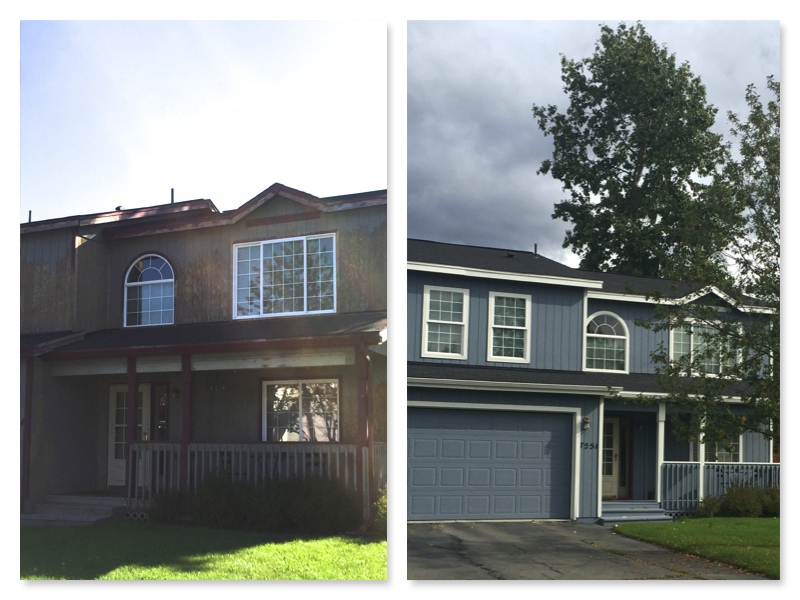Color Basics
by GSL site adminCOLOR BASICS
Why Color Matters
Considering how color makes you feel and what it says about you, is it any wonder that color is one of the most important decorating decision you'll make?
Color is a language. Color is one of the most fulfilling elements in our lives. Color can attract your attention or change your mood. It speaks to who you are, how you feel and where you're going. At GSL PAINTING LLC we can help you put together the perfect colors for your Alaskan life.
Color is one of the first things you notice when you walk into a room. Is it any wonder that color, and how you use it, is one of the most important decorating decisions you'll make in your home? Inside your home, the latest colors and the way they're applied give voice to your personality and decor.
Color sets a mood. From floor to ceiling, paint color reflects your style and makes a personal statement of what home means to you.
Color unites one-of-a-kind accent pieces with manufactured items throughout your home.
Electrifying hues, inspired by technology, bring a touch of whimsy to spaces that also feature natural carved wood, woven textiles and wrought iron.
Bright colors are further enhanced when paired with large areas of negative space.

Color Theory
Learning the basic "language of color" will help you achieve your decorating goals.
Hue
Hue identifies the general family of a color, such as red, yellow, blue or green. The traditional color wheel is made up of twelve color families: red, red-orange, orange, yellow-orange, yellow, yellow-green, green, blue-green, blue-red-violet, violet and blue-violet.
Color Wheel
Colors on the opposite side of the wheel from each other are called complementary colors. In combination, these create striking contrasts. For less contrast, choose colors next to each other on the color wheel, which are called analogous colors. Choosing colors of different tints within one color family creates a monochromatic color scheme.
Warm or Cool?
Different colors in the same family may be described as being "warm" or "cool." Colors with yellow undertones will seem warmer, while the same color with blue or red undertones will appear cool. Cool colors – blue, green, violet – invite relaxation and thought. Warm colors – red, orange, yellow – encourage conversation and play. GSL PAINTNIG color experts suggest using both warm and cool colors in rooms where you desire balance and variety.
Value
Value describes how light or dark a specific color may be. On paint manufacture’s color strips, lighter values are at the top, mid-tone values are in the middle and darker values are at the bottom. When you combine colors from a single color strip, you're creating a monochromatic color scheme – perfect for creating a sophisticated, spacious look in a single room.
How to Choose Colors
Begin at the Beginning
Determine what features or existing finishes in the room you would consider permanent. Consider the cabinets, tile or a brick fireplace. For example, if the wood of your kitchen cabinets has a red undertone, make sure the paint color you choose works well with that hue.
Create a Focal Point
Emphasize your home's attractive architectural features, such as crown molding or arched window treatments, with contrasting paint – lighter or darker than the wall – or by painting them with a glossy finish. You can also make one wall an accent wall by painting it a different color, giving it a faux finish, adding wallpaper or a border.
Unify the Color Flow
You can unify rooms by using a common color palette. Create distinct spaces by altering the shade and hue within the common palette.
Emphasize or Minimize
Color can emphasize certain features - and minimize others. A long narrow room will look wider if you use a slightly darker color on the shorter walls and a lighter color on the longer walls. You can make a ceiling appear higher by applying a lighter color, or lower with a darker color. To give a big room a more intimate feel, paint the walls in colors that advance toward you, such as red, gold, orange and brown. To help a small room seem larger, paint the walls in colors that make them appear to recede, such as blue, green or violet.
Reflect on Light Sources
Remember that the color you choose may look different at various times of the day and night. The warm tones of incandescent lights will have a different influence on the color than the natural light of day. Once you're aware of how different light sources can affect your color choices, you can change your room's "mood" to match the pace of your day.
Let the professionals at GSL PAINTING LLC guide you through the process and ensure that your home painting project turns out beautiful. GSL PAINTING LLC serves Anchorage, Eagle River, Chugiak, Girdwood and surrounding areas. Call us today 907.205.0590 for a free no hassels estimate!


